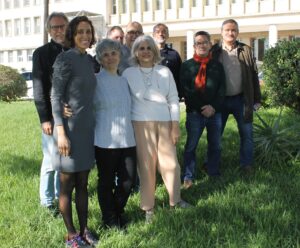 Research Group Coordinator – Marcelo Urbano Ferreira
Research Group Coordinator – Marcelo Urbano Ferreira
The Individual Health Care Group (IHC) was created in 2018 with the overall goal of conducting translational and implementation research in the epidemiology, prevention, diagnosis and treatment of infectious/tropical diseases in Portugal, EU and African countries and Brazil, as well as in travel medicine and migrant health. Members of the IHC participate in the GHTM’s “cross-cutting issues” of “Global pathogen dispersion and population mobility”, “Drug discovery and drug resistance” and “Diagnostics and clinical trials”. With regard to teaching, the IHC group coordinates short post-graduate courses, such as the Travel Medicine course, and the Tropical Health Master’s course; IHC researchers also participate in other IHMT Master’s and PhD courses.
Over the past 12 months, more emphasis has been placed on fieldbased clinical and epidemiological research conducted in the tropics. New activities include planned and ongoing research projects in Angola, Brazil, Cape Verde, Mozambique, and São Tomé and Príncipe, as well as field missions to remote populations in the Amazon. We highlight some of these research activities led by IHC members in Portugal and tropical countries in 2022.
IHC Highlights
- A cross-sectional study of the prevalence of anti-Leishmania antibodies in blood donors in mainland Portugal;
- The causes and risk factors contributing to perinatal and neonatal morbidity and mortality in pregnant women of São Tomé;
- Cross-sectional surveys of the prevalence syphilis, HIV and HBV infections among people in the Benguela Hospital, Angola;
- Repurposing strategy in silico to identify drugs targeting energy metabolism and membrane transporters of Neisseria gonorrhoeae;
- Population-based studies of childhood SARS-CoV-2 infection in the Amazon region showing that five-year old children in the most socioeconomically vulnerable households were disproportionately affected by SARS-CoV-2 infection and disease;
- Population-based cohort study of urban malaria in the Amazon showing that one-fifth of the hosts account for 80% or more of the community-wide vivax malaria burden and disproportionately contributes to onward transmission, representing a priority target for more intensive interventions to achieve malaria elimination;
- The clinical trial “Efficacy and safety of fexinidazole in patients with Human African Trypanosomiasis (HAT) due to Trypanosoma brucei rhodesiense: a multicenter, open-label clinical trial” (promotor DNDi, IHMT partner) completed in October 2022;
- The clinical trial “Towards a paediatric indication for children between 1 and 14 years of age for a safe, effective, all-oral singledose treatment formulation of acoziborole for first and second stage gambiense human African trypanosomiasis (g-HAT)” (promotor DNDi, IHMT partner) was initiated in July 2022 in the Democratic Republic of Congo (DRC);
- A field mission to the Yanomami Amerindian Reservation, Brazilian Amazon, carried out from 3-19 October, 2022, to assess the health status of Yanomami Amerindians exposed to environmental mercury contamination in illegal gold-mining enclaves;
- The international symposium “New antimalarials: from drug discovery to clinical trials”, co-organized by IHMT, the Institute of Biomedical Sciences of the University of São Paulo, Brazil, and the Karolinska Institute, Sweden, took place between 19 and 20 December 2022 with 30 participants in-person and 35 remotely.